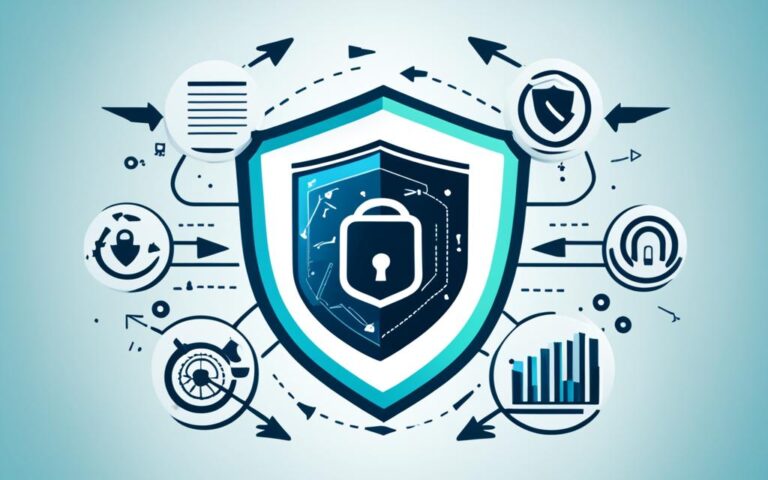The Evolution of E-data Destruction
As technology continues to advance, so does the importance of secure disposal of digital information. The evolution of e-data destruction and IT asset disposition practices has led to a greater emphasis on protecting sensitive data and mitigating environmental risks. In the past, organizations often neglected to erase confidential data before selling their surplus IT equipment. However, with the emergence of certifications such as e-Stewards and R2, there has been a significant shift towards responsible e-data destruction.
The e-Stewards certification, known for its rigorous standards, has gained support from the environmental community. This certification ensures that electronics recyclers undergo independent audits to verify their compliance with responsible recycling practices. Additionally, Gartner’s Magic Quadrant for the ITAD industry provides evaluations of vendors based on their vision and execution, further driving accountability in e-data destruction.
These advancements highlight the increasing recognition of the environmental and privacy risks associated with improper disposal of digital information. Organizations now prioritize data erasure to render e-data irrecoverable, safeguarding against unauthorized exposure and potential data breaches.
The Importance of Data Erasure in E-data Destruction
Data erasure plays a crucial role in the process of e-data destruction. It involves permanently destroying all electronic data on a storage device, rendering it irrecoverable. Software-based data erasure methods overwrite data onto all sectors of a hard disk drive or other digital media. This process goes beyond basic file deletion commands, which only remove direct pointers to the data and make recovery possible.
Data erasure is particularly important in the era of increased storage of sensitive data and the risk of data breaches. By ensuring secure and complete erasure of data, organizations can mitigate the risk of unauthorized exposure, loss of corporate reputation, and regulatory non-compliance.
The Irrecoverable Destruction of Electronic Waste
Electronic waste, or e-waste, is a pressing concern due to its environmental impact. Improper disposal of electronic devices can lead to pollution, as they contain hazardous materials like lead, cadmium, and brominated flame retardants. Data erasure in e-data destruction is crucial for secure disposal of these devices.
By thoroughly erasing data, organizations can ensure that the electronic waste they handle is rendered irrecoverable and safeguarded against unauthorized access.
Moreover, data erasure reduces the risk of illegal practices, such as the illegal export of e-waste to developing countries. By implementing secure data erasure methods, organizations contribute to sustainable practices and responsible electronic waste management.
Protecting Against Unauthorized Exposure and Regulatory Non-Compliance
Data breaches can have severe consequences for organizations, including financial loss and damage to their reputation. Secure data erasure is an essential step towards protecting sensitive information and preventing unauthorized exposure.
Data protection regulations, such as the General Data Protection Regulation (GDPR) in the UK, require organizations to ensure the secure and irrecoverable disposal of personal data. Failing to comply with these regulations can result in significant penalties and legal liabilities.
Proper data erasure offers organizations peace of mind, knowing that sensitive data is permanently destroyed and cannot be recovered, reducing the risk of regulatory non-compliance and associated consequences.
Implementing robust data erasure practices aligns with ethical and legal responsibilities, ensuring the protection of individuals’ privacy and maintaining compliance with data protection laws.
Challenges and Considerations in E-data Destruction
E-data destruction poses unique challenges and requires careful considerations for organizations. The selection of a suitable vendor plays a pivotal role in ensuring secure and effective disposal of digital information. However, the abundance of under-capitalized vendors in the market can make the process daunting. Evaluating and selecting a qualified service provider becomes crucial in mitigating risks and ensuring accountability.
The typical request for proposal (RFP) process, often used to evaluate vendors, may not effectively predict their performance. This can result in inadequate risk management and the potential for data breaches. Organizations must go beyond risk management and recognize the broader benefits of implementing a mature disposition program.
“By prioritizing secure disposal, organizations can improve asset utilization and process efficiency,” says Jane Richards, an industry expert. “A mature disposition program can lead to optimized resource allocation and reduced costs, positively impacting the organization’s bottom line.”
Compliance with regulations is another critical consideration in e-data destruction. Organizations must adhere to industry-specific regulations such as HIPAA, FACTA, and Sarbanes-Oxley Act. Failure to comply can result in severe penalties and reputational damage. To navigate these regulations successfully, organizations need to conduct thorough due diligence and adopt industry best practices.
Vendor Selection
- Thoroughly evaluate vendors based on certifications, track record, and financial stability.
- Consider vendors with e-Stewards or R2 certifications. These independently audited certifications ensure responsible and compliant e-data destruction.
- Request references and review their past performance and client satisfaction.
- Assess their information security measures, data handling protocols, and chain-of-custody processes.
Risk Management
- Implement a comprehensive risk management strategy that encompasses data security, privacy considerations, and regulatory compliance.
- Regularly assess and update risk mitigation plans to adapt to evolving threats.
- Establish clear accountability measures within the organization and with the selected vendors.
- Develop contingency plans to address potential breaches or data loss scenarios.
Regulatory Compliance
“Compliance with regulations is vital to protect sensitive data and maintain the organization’s credibility,” remarks Mark Thompson, a compliance expert. “Organizations should ensure they have a thorough understanding of the regulatory landscape and choose vendors who prioritize compliance.”
Compliance requirements vary by industry, and organizations must consider the specific regulations that apply to their operations. They should establish close partnerships with vendors who demonstrate a robust commitment to compliance and ongoing regulatory updates.
By addressing the challenges of vendor selection, risk management, accountability, and regulatory compliance, organizations can navigate the complexities of e-data destruction effectively. Creating a strong data destruction strategy minimizes the risks associated with unauthorized data exposure, ensures compliance, and protects the organization’s reputation.
Advances in Data Erasure Techniques
The field of data erasure has witnessed significant advancements in techniques and technologies, providing organizations with secure and effective options for the disposal of e-data. These advancements include:
- Software-based Overwriting: Utilizing software applications to overwrite data onto all sectors of a hard disk drive. This process involves writing zeros, ones, or meaningless pseudorandom data, ensuring that the previous data is irrecoverable. Software-based overwriting goes beyond basic file deletion commands, which merely remove direct pointers to the data.
- Multiple Overwrites: Some data erasure programs offer the capability of performing multiple overwrites to comply with government and industry standards. These multiple overwrites enhance the security and integrity of the erasure process, making data recovery virtually impossible.
- Encryption: Encryption is a complementary technique in data erasure. By deleting or overwriting the encryption keys, the data becomes inaccessible. This ensures that even if someone manages to recover the encrypted data, they won’t have the means to decrypt it and gain access to the sensitive information.
- Self-encrypting Drives (SEDs): SEDs have emerged as a secure solution for data erasure. These drives can encrypt data quickly and render it inaccessible by simply changing the encryption key. With SEDs, organizations can ensure that data remains encrypted and protected throughout its lifecycle, making it virtually impossible to retrieve the original information.
These advances in data erasure techniques provide organizations with a range of options to securely dispose of e-data, mitigating the risk of unauthorized access, data breaches, and regulatory non-compliance.
Example Table: Comparing Data Erasure Techniques
| Data Erasure Technique | Key Features | Advantages |
|---|---|---|
| Software-based Overwriting | – Writes zeros, ones, or pseudorandom data onto all sectors of a hard disk drive – Goes beyond basic file deletion – Secure erasure process |
– Cost-effective – Suitable for most data erasure needs – Complies with industry standards |
| Multiple Overwrites | – Performs multiple overwrites of data – Enhanced security and data integrity |
– Provides an extra layer of protection – Meets stringent government and industry requirements |
| Encryption | – Deletes or overwrites encryption keys – Renders data inaccessible |
– Ensures data confidentiality – Mitigates the risk of unauthorized access |
| Self-encrypting Drives (SEDs) | – Encrypts data quickly – Changes encryption key to render data inaccessible |
– Simplifies data protection – Offers high-level security measures |
Impact of E-data Destruction on the Environment and Compliance
E-data destruction has significant implications for the environment and regulatory compliance. It is crucial to recognize the potential environmental pollution caused by improper electronics recycling and disposal practices. Electronic devices, such as computers and smartphones, contain hazardous materials like lead, cadmium, and brominated flame retardants. When not appropriately managed, these substances can contaminate soil and water, posing risks to human health and ecosystems.
Furthermore, regulatory compliance is a key concern when it comes to e-data destruction. Strict regulations, including HIPAA, FACTA, and the Sarbanes-Oxley Act, aim to mitigate the risk of unauthorized exposure of confidential data. Organizations must take compliance seriously to avoid fines, reputational damage, and legal liabilities. Proper e-data destruction involves following industry-recognized disposal and recycling practices, ensuring both environmental sustainability and adherence to regulatory requirements.
| Environmental Impact of Improper E-data Destruction | Regulatory Compliance Risks |
|---|---|
|
|
By prioritizing responsible e-data destruction practices, organizations can minimize their environmental impact and ensure compliance with regulations. Proper disposal and recycling of electronic waste, in accordance with approved standards, are essential to protect the environment and public health while avoiding potential legal consequences and reputational harm.
Quote:
“The responsible disposal of electronic waste is not just a legal and ethical obligation; it is a crucial step towards building a sustainable future.” – Jane Green, Environmental Compliance Expert
Implementing effective data destruction processes and partnering with certified vendors can help organizations achieve both environmental sustainability and regulatory compliance.
Conclusion
The evolution of e-data destruction has revolutionized the way organizations approach the secure disposal of digital information. Certified standards, such as the e-Stewards certification, have provided essential guidelines for ensuring not only secure disposal but also environmental responsibility. These advancements have allowed organizations to prioritize e-data destruction while addressing the environmental impact and regulatory compliance associated with electronic waste management.
Data erasure techniques have also made significant progress, offering organizations effective and comprehensive options for data destruction. By permanently removing all electronic data from storage devices, organizations can mitigate the risks of unauthorized exposure, reputational damage, and regulatory non-compliance.
However, challenges persist in selecting qualified vendors and maintaining compliance with regulations. Thorough due diligence is crucial in assessing vendors’ capabilities and track records, ensuring accountability and risk management. Moreover, adherence to regulations such as HIPAA, FACTA, and the Sarbanes-Oxley Act is vital for avoiding fines, legal liabilities, and maintaining a secure operational environment.
By prioritizing e-data destruction and considering environmental impact and regulatory compliance, organizations can protect their reputation, mitigate risks, and contribute to a more sustainable future. It is imperative for organizations to partner with reliable service providers, adhere to certified standards, and implement effective data erasure techniques to ensure secure disposal and minimize the environmental impact of electronic waste.
FAQ
What is e-data destruction?
E-data destruction refers to the secure disposal of digital information. It involves permanently destroying electronic data on storage devices to make it irrecoverable.
Why is data erasure important in e-data destruction?
Data erasure plays a crucial role in e-data destruction as it ensures the secure and complete removal of data from storage devices. This helps mitigate the risk of unauthorized exposure, loss of reputation, and regulatory non-compliance.
What are the challenges and considerations in e-data destruction?
When it comes to e-data destruction, organizations face challenges in selecting a qualified service provider, effectively managing risk, and complying with regulations. Thorough due diligence and consideration of industry best practices are essential in vendor selection.
What are the advances in data erasure techniques?
Data erasure techniques have advanced to include software-based overwriting, multiple overwrites to comply with standards, encryption, and self-encrypting drives. These advances provide organizations with secure and effective options for disposing of e-data.
What is the impact of e-data destruction on the environment and compliance?
Improper e-data destruction can contribute to environmental pollution, as electronic devices contain hazardous materials. Compliance with regulations such as HIPAA, FACTA, and Sarbanes-Oxley Act is crucial to avoid fines and reputational damage. Responsible disposal and recycling practices are necessary to minimize environmental impact.
How does e-data destruction contribute to a more sustainable future?
By prioritizing e-data destruction, organizations can mitigate risks, protect their reputation, and contribute to a more sustainable future by ensuring secure disposal of digital information and minimizing environmental impact, while also complying with regulations.













